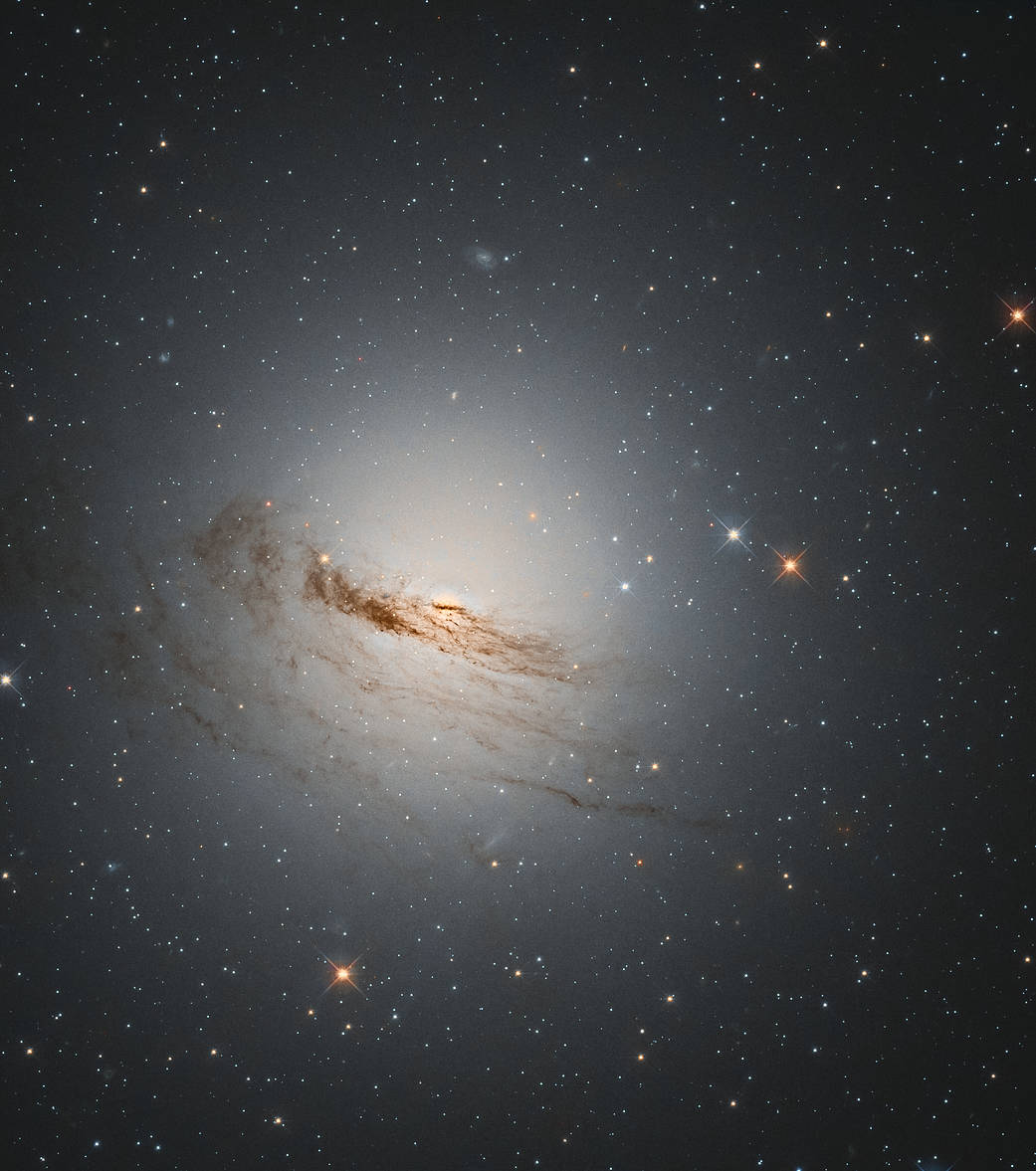Hubble telescope captures striking image of a dying galaxy
After losing most of the gas and dust that makes up the galaxy, NGC 1947 will likely not make new stars.

The Hubble Space Telescope has captured a striking photo of a dying galaxy.
Known as NGC 1947, the galaxy was discovered nearly 200 years ago by a Scottish-born astronomer, James Dunlop, who found it while studying the night sky in Australia. The galaxy can only be seen from the Southern Hemisphere, in the constellation Dorado, the dolphinfish. It's a lenticular galaxy, meaning that its original shape was somewhere between a spiral and elliptical galaxy.
NGC 1947 has lost most of the material that made up its signature spiral arms, which used to orbit around its center, Hubble astronomers said in a NASA statement. We can still make out what's left of its structure thanks to backlighting from millions of stars. In Hubble's new image, faint threads of the remaining gas and dust can still be made out.
Related: The best Hubble Space Telescope images of all time!
Because the galaxy is missing most of its star-forming material, it's unlikely to create new stars, according to Hubble astronomers. When dense clouds of gas and dust collapse under the pressure of gravity, the cloud creates a disk of material that fuels new star growth. Without enough gas and dust to form those dense clouds, NGC 1947 will continue to fade over time.
NASA posted this image from Hubble after a glitch in the telescope's software unexpectedly halted science operations on March 7. The telescope came back online and restarted observations on March 11.
Follow Kasandra Brabaw on Twitter @KassieBrabaw. Follow us on Twitter @Spacedotcom and on Facebook.
Breaking space news, the latest updates on rocket launches, skywatching events and more!
Join our Space Forums to keep talking space on the latest missions, night sky and more! And if you have a news tip, correction or comment, let us know at: community@space.com.

Kasandra Brabaw is a freelance science writer who covers space, health, and psychology. She's been writing for Space.com since 2014, covering NASA events, sci-fi entertainment, and space news. In addition to Space.com, Kasandra has written for Prevention, Women's Health, SELF, and other health publications. She has also worked with academics to edit books written for popular audiences.
